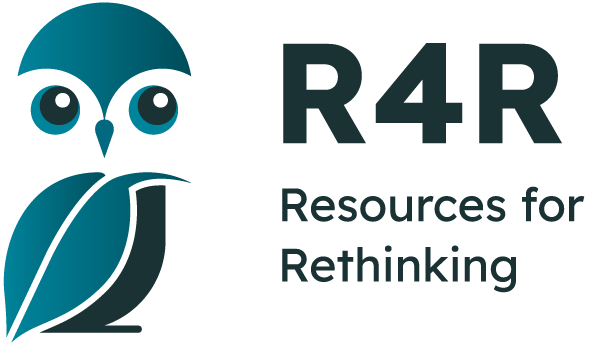Search for Resources

Resources
581 - 600 of 1238 Results
-
Dirty Water Project
Students become environmental engineers in this innovative STEM resource that uses an inquiry based approach to address the global issue of water pollution. Real world science provides a meaningful learning experience where a class will: Compare...
Full curriculum matchAvailable for download -
Blue
This short video introduction to the feature film delivers a powerful call to action on behalf of the world’s oceans. Stunning and sometimes shocking images reveal the extent of the damage that has occurred from overfishing, pollution, climate...
Full curriculum matchAvailable for download -
Redesigning Plastic Packaging
The lesson focuses on the widespread practice of plastic packaging and the problems it creates. It is one of a series of lessons within the World’s Largest Lesson that explores the circular economy. Students evaluate the effectiveness of the...
Full curriculum matchAvailable for download -
Experience Energy
This resource is comprised of six lessons with the goal of helping students to gain a deeper understanding of energy, the connection between energy and the environment, how energy is used, methods of conservation and renewable energy solutions. Lesson...
Full curriculum matchAvailable for download -
The Water Walker
The Water Walker tells the story of an Ojibwe grandmother (Nokomis) named Josephine who loves Nibi (water). She raises awareness of the need to protect Nibi for future generations by walking all around the Great Lakes and from the four salt waters...
Full curriculum matchAvailable to Order -
The Water Walker Teacher's Guide
This teacher's guide serves as a companion to the book The Water Walker. The guide provides a number of learning opportunities with the Ojibwe language, social activism, character education and social studies. Also included are discussion...
Full curriculum matchAvailable for download -
To What Degree?
Through a series of four lessons, students will learn the story of how climate change is impacting life in Canada today. The students will be working with photos from the exhibition "To What Degree? Canada in a Changing Climate". Lesson 1: How do...
Full curriculum matchAvailable for download -
Thirst
This is a probing documentary into the deplorable conditions of drinking water in northern Ontario First Nations communities. Over 200 First Nations communities in Canada have unclean, unsafe drinking water. The reasons for this on-going tragedy are effectively...
Full curriculum matchAvailable for download -
Science First People
This teacher resource guide provides educators with resources to support increased integration of First Peoples knowledge and perspectives into classrooms and schools. The resource can be used in conjunction with locally based resources that are developed...
Full curriculum matchAvailable for download -
What is it Like to Be an Immigrant Separated from Your Family?
Students build empathy for refugees and immigrants by learning about the experience of some families separated at the southern border of the U.S. in 2018. Students then hear a poem and write their own imaginative poems to convey their learning. As suggested...
Full curriculum matchAvailable for download -
Life Below Water
This resource examines the problem of plastics in the world’s oceans and directs students to consider individual changes they can make to help reduce the damage being caused. The lesson begins by drawing attention to the UN’s Sustainability...
Full curriculum matchAvailable for download -
Iqbal and his Ingenious Idea
During the monsoon season, Iqbal's mother must cook over an open flame inside the family home in spite of the fact that it makes some of the family members sick. When Iqbal hears of the district science fair and its theme of "sustainability", he...
Full curriculum matchAvailable to Order -
Adapting To A Changing Climate
This program offers a comprehensive examination of climate adaptation. After identifying the role of mitigation in slowing the impact of climate change, the video shifts its attention to adaptation. Interviews with climate scientists effectively...
Full curriculum matchAvailable for download -
Thirst: Lesson Plan
More than 100 First Nations communities across Canada do not have clean, safe drinking water. Thirst is a glimpse into Keewaywin, an Oji-Cree community north of Red Lake, Ontario, where the water is contaminated with uranium and residents are forced...
Full curriculum matchAvailable for download -
Respect the Water #1
In this four part lesson plan, teachers will lead the students in discussions and explore Aboriginal perspectives on respecting the environment; how individual and collective behavior affects the environment; and the role of community engagement in maintaining...
Full curriculum matchAvailable for download -
Respect the Water #2
In this three part lesson plan, teachers will lead the students in discussions and explore Aboriginal perspectives on respecting the environment; Aboriginal cultural teachings on women's responsibility for water; how individual and collective behavior...
Full curriculum matchAvailable for download -
Exploring Canada's Energy Future
This resource was created to support teachers in using the Exploring Canada's Energy Future Interactive Tool with their students. Based on data from Energy Futures reports, this tool allows students to explore energy production and consumption trends...
Full curriculum matchAvailable for download -
The End Of The Arctic
The video examines the effect of climate change and seismic blasting on the Baffin Island community of Clyde River in the Canadian Arctic. The effect of the two is to threaten the people's traditional way of life and the continued existence of the community....
Full curriculum matchAvailable for download -
Teaching About Syria
This unique resource offers teachers and students a comprehensive set of tools and suggestions on how to use them to examine the war in Syria. The author provides links to powerful videos, slide presentations, news reports, journal articles and...
Full curriculum matchAvailable for download -
My Wounded Island
My Wounded Island is the story of a little girl, Imarvaluk, who is scared of the sea. Imarvaluk, whose name means "the song of the waves" in her language Inupiat, lives on the small islands north of the Bering Sea near the Arctic Circle. The sea is bewitched...
Full curriculum matchAvailable to Order

